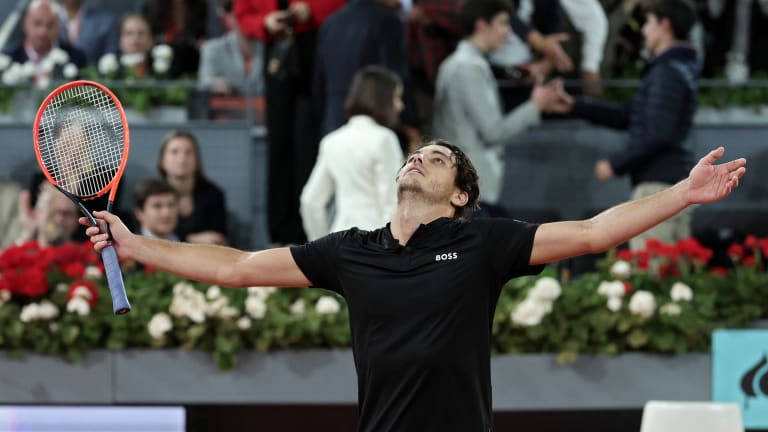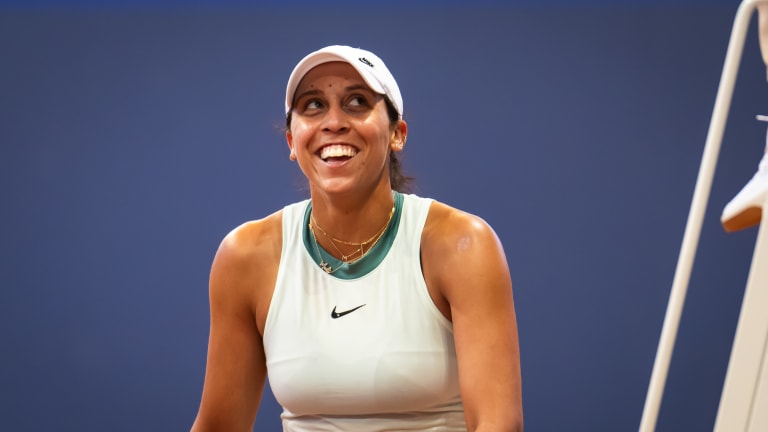Madrid, Spain
Taylor Fritz, Madison Keys learn to love Madrid's fast clay by sticking to their strengths
By May 02, 2024Madrid, Spain
Can Fritz, Shelton and other American men go from “good clay-court players” to great ones?
By Apr 28, 2025Madrid, Spain
With new coach Dinara Safina, Diana Shnaider makes mental strides in Madrid
By Apr 28, 2025Madrid, Spain
Aryna Sabalenka vs. Peyton Stearns: Where to Watch, Madrid Preview, Betting Odds
By Apr 28, 2025Madrid, Spain
Jack Draper vs. Matteo Berrettini: Where to Watch, Madrid Preview, Betting Odds
By Apr 28, 2025Madrid, Spain
Iga Swiatek vs. Diana Shnaider: Where to Watch, Madrid Preview, Betting Odds
By Apr 28, 2025Madrid, Spain
Madrid Open matches suspended due to major power outage
By Apr 28, 2025Madrid, Spain
Alexander Zverev wins amid controversy in Madrid
By Apr 27, 2025Madrid, Spain
Defending Madrid champ Andrey Rublev out to Alexander Bublik
By Apr 27, 2025Madrid, Spain
Aryna Sabalenka shouts out 🇧🇷 Brazilian fans after Madrid comeback
By Apr 27, 2025Taylor Fritz, Madison Keys learn to love Madrid's fast clay by sticking to their strengths
Said Keys about her change in fortune, “Finally really just honestly saying, ‘F-it, I’m just going go out and do my best.’”
Published May 02, 2024
Advertising

Fritz reached the Munich final prior to stringing together four more wins in Madrid.
© AFP or licensors
Advertising

Keys is through to her first WTA 1000 semifinal since 2022 Cincinnati.
© 2024 Robert Prange